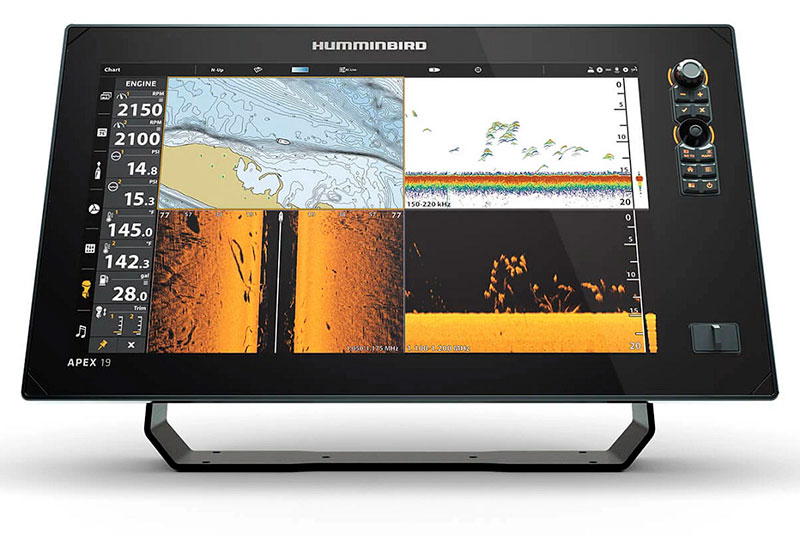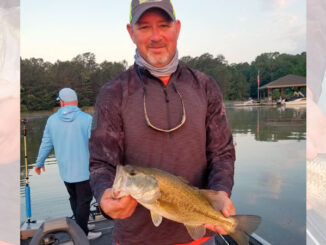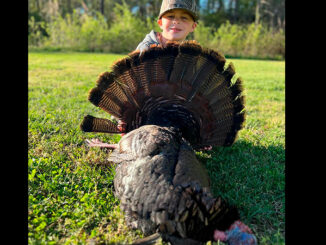
Is fishing headed toward becoming a video game on the water?
That’s how a lot of people are describing what the latest in marine electronics – forward-facing sonar, a/k/a LiveScope – has done to the sport.
You can look at the screen on the bow of your boat or the one on your console and see everything on the bottom in great detail, as well as fish swimming around, even moving to look at a passing lure. That’s the video-game comparison.
Forward-facing sonar is the latest in a series of tremendous technological advances beyond the sonar that searched the bottom under our transoms and trolling motors for years. First there was side-scan, now forward-facing. You can literally take a peak at everything all 360 degrees around your boat.
I know some people who personally wish it had never been invented, and some who love it. It certainly has changed the sport, and not just bass fishing. You see very few tournament crappie fishermen who don’t use forward-facing sonar, and on the Santee Cooper lakes near my home in South Carolina, I’ve seen guys in a 14-foot aluminum boat with forward-facing sonar fishing for shellcrackers and bluegills. In fact, I’ve seen aluminum boats with electronics that are worth more than the boat itself.
Yes, you can locate underwater structure better than ever before with forward-facing sonar. Yes, you can see fish relate to cover, individual fish. But the one big thing I think is amusing is that a lot of people think that just because you can see fish on your device, that you’re going to catch them.
It’s still fishing
Forward-facing sonar has certainly added to the amount of money being invested in fishing. It’s a tool that, if you’re a serious fisherman, a tournament fisherman, you have to have it. But just because you have invested $3000 to $12,000 in your electronics, don’t expect the fish to jump into your boat.
A lot of people saw live coverage of the Bassmaster Classic on the Tennessee River in late March, and they watched Jeff Gustafson use forward-facing sonar to help catch the smallmouth bass that won him the Classic.
So the forward-facing sonar is magic, right?
Well, all of the anglers in the Bassmaster Classic had access to forward-facing sonar, and Gussy was the only one to uncrack the code, to be able to use forward-facing sonar to catch those big smallmouth bass. There was an 18-inch size minimum on the lake, so it was tougher to catch those big smallmouth. So he wasn’t catching small fish. The question is, what made him better? How did he crack the code even when all of his opponents had the forward-facing sonar?
Did he use his forward-facing sonar better than everybody else in the Classic field, or did he use it to figure something out that none of the other competitors did?
Technology is being developed at such a rapid rate that I don’t doubt that in two or three years, certainly four or five, we’re going to look back and see that the unit Gussy used in the Classic will seem old. I don’t doubt that Humminbird and MinnKota have a lot of stuff in the works right now. But you’ve still got rods, reels, line and baits, and all of those are more important to catching fish than your electronics. You can find ‘em, but you still have to catch ‘em.
What’s on screen?

I have a Humminbird Apex 16 on the console of my Phoenix boat, and an Apex 19 up front – yes, it looks like a TV screen, but you still have to catch the fish. Gussy was using an Apex in the Classic. But plenty of bass pros still believe in flashers, like me, David Fritts, Jeff Coble and others.
On the Apex 19, I can “4-box” and see all of the features: normal bottom-reading sonar, a chartplotter, side scanning and front scanning – real 360 imaging. The unit weighs 22 pounds, and I can’t run it on my console because I can’t see over it when I’m driving. That’s why I use the Apex 16 on the console. I can look all the way around my boat with the 360. But it’s the forward-facing I use when I want to target something.
Yes, the technology is something like a video game. I have a lot of advantages I’ve developed over the past 30 years. Being able to triangulate, to find an offshore spot and get right back on it, that was so important. Now, you have waypoints, where you just push a button to get back on a spot in just a second that used to take some time. As a matter of fact, I’m in my boat, fishing my home lake, Lake Murray, while I’m dictating this column, and I’m looking at an offshore spot that I never realized before had grass on it. That’s a big advantage.
Yes, you see young fishermen doing well in tournaments using their electronics to the greatest advantage. Let’s face it, the younger generation started off in first or second grade using some kind of electronics. Their learning curve is certainly shorter than somebody my age. It’s harder for me to use these units than it is for a 20-year-old. But the cool thing about my job on the Bassmaster Live program is that I work with the best fishermen in the country, young and old. And I can talk to those guys and learn. You can learn from YouTube.
I don’t think forward-facing sonar is as important in the bass world, because most largemouth bass are setting up on some kind of cover. Now, when you go up north and you’re catching smallmouth bass in open water, it becomes more important. You can chase a fish around in open water and cast to him until he bites.
It’s especially important for crappie fishermen. Those guys, they can tell which fish are bigger, and they can target that fish. With a seven-fish limit in most of their tournaments, they can tell which fish is a 2-pounder, cast to it and ignore the rest.
The technology is certainly changing that side of our sport – finding the fish. But that’s only part of the whole game. You still have to catch them, and the time you put in on the water is irreplaceable, no matter how good the technology is. Spend your time on that side of things, because the other stuff is going to take care of itself.
But time on the water is irreplaceable, no matter how good you are with the technology.
Love it/hate it:
Some anglers wish forward-facing radar was never invented, but even those anglers recognize the value in having this technology onboard. And having it doesn’t make you automatically catch more fish. It’s just one more tool that can help.





Be the first to comment